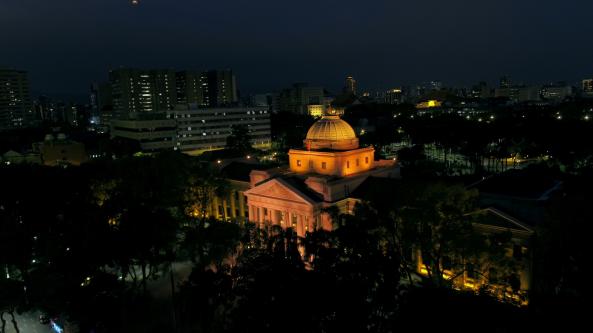| Number of Sessions |
|---|
-
 Organizer
:
National Taiwan Museum
Organizer
:
National Taiwan Museum
-
 Contact Us
:
02-2382-2566
Contact Us
:
02-2382-2566
-
 Ticket Details
:
NT$30 Regular | NT$15 Discount
Ticket Details
:
NT$30 Regular | NT$15 Discount
-
 Opening Times
:
Tuesday-Sunday: 9:30 am-5 pm
Opening Times
:
Tuesday-Sunday: 9:30 am-5 pm
A little boy found a hard, little granule asking him to bring a lost seed home. Another little girl heard some chatter near the pond, wondering what kind of gathering could be so lively. Taiwan has been the Formosa blessed with various natural environments and unique cultures due to its location and environment. Through the lens of the natural and cultural history of Taiwan, the exhibition is divided into six parts: The Talking Stone, The Wonderland in the Forest, Journey to the Island, Once Upon a Time in the Island, The Contour of the Island, and Circle of Life. With narratives, specimens, cultural objects, and interactive devices, the exhibition provides a multilayered sensory demonstration, guiding children to experience and think about the nature and humanities of Taiwan, strengthening their understanding of this land and cultivating their appreciation and respect to cultural diversity.
The Talking Stone
How many different kinds of stones are there in Taiwan, and how are they different from each other? How are fossils formed? Why does Taiwan feature an undulating shape of terrain? Through a talking stone, this unit will get yourself introduced to how Taiwan was formed and what the geographical and environmental features of the island are.
The Wonderland in the Forest
Forests in Taiwan stretch from coasts to mountains. What is special about these forests? Well, the seeds of plants help reproduction. We know that they are spread in different manners, but how exactly? Are they airborne or waterborne? Why do insects have camouflage to protect themselves and escape from their natural enemies. Some animals feed on grass, some eat fruits, and still others have a widely varied diet. Can you list some of the herbivores, carnivores, and omnivores? The knowledge about biological diversity lies in the ecology of the forests. Through conversations among animals in the story and various specimens, children can learn more about animals and plants. Furthermore, during the interactive learning process, children can explore, draw inferences, and find out facts and rules on their own, gaining more pleasure out of the experience
Journey to the Island
Why do black-faced spoonbills winter in Taiwan every year? Why do birds have long, pointed, or flat beaks? The special geographical location and diverse environments of Taiwan attracts various migratory birds to stay. With specimens and interactive devices, the unit enables children to observe and learn the habits and characteristics of migratory birds. Moreover, it cultivates children’s interest in getting themselves acquainted with the birds and going birdwatching.
Once Upon a Time in the Island
Why are Chinese sharp-nosed vipers (a kind of snake) seen on the pottery of the Paiwan? What had the divine bird in the Atayal legend done? Is it true that among the Yami (Tao) people, the elderly, males, and females have different rules to follow when it comes to eating fish? Where did the sun, the moon, and the ancestors of the Pinuyumayan come from? To children, simply a single picture or a story can outweigh a vast amount of knowledge. With myths being told and pictures being shown, the exhibition paves the way for the education of the origins of different and what children see nature as, leading them to appreciate and respect the pluralistic values of different cultures.
The Contour of the Island
What creatures exist in the sea encompassing Taiwan? Is it true that whales talk? How do they sound like, then? How did the ships of other countries discover Taiwan? With scenarios of ecology exploration and sailing adventures, this unit introduces what the ocean around Taiwan is like, discusses the location of Taiwan on the world map, and talks about the connection between Taiwan and the world.
Circle of Life
Dynamic or inanimate, big or small, long-existing or lately-evolved, all creatures and non-living things belong to the island, Taiwan. The unit will present an art installation made with children, enabling them to draw along the line arts on the topics of flowers, trees, birds, which would be compiled as a flipbook animation. Children can flip their work and manually adjust the speed of it. While appreciating what is made together, children can watch the growing and changing process of flowers, trees, and birds both at a slow and a speedy pace.


